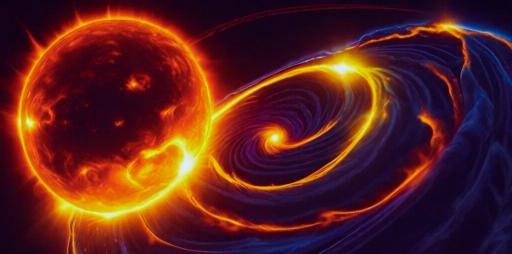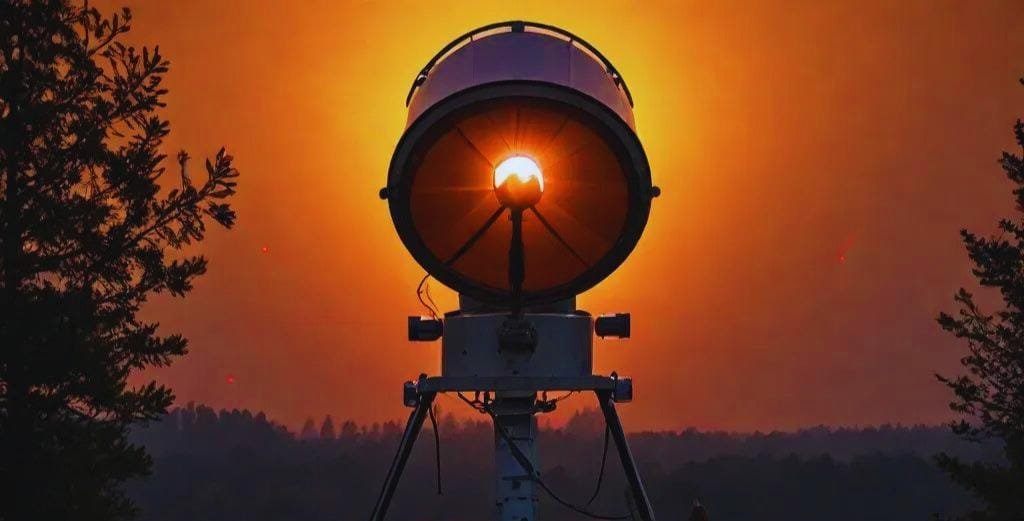The Sun puts on an amazing light show in space. Solar flares burst from its surface like giant fireworks. These powerful blasts shoot energy and light into space, creating spectacular displays.
What makes solar flares so special? Let’s explore their secrets. First, they start deep inside the Sun’s magnetic fields. When these fields twist and turn, they create huge explosions that scientists study closely.
Think of a rubber band stretching until it snaps. That’s how solar flares work. The Sun’s surface builds up energy over time. Then, boom! It releases that power in a bright flash that can travel millions of miles.
Scientists watch these space shows carefully. Modern tools help them track when flares might happen. Some flares are small and harmless, while others pack enough punch to affect life on Earth.
How Solar Flares Form

The Sun’s surface is always moving. Hot gases flow like rivers in space, creating complex patterns. These movements tangle up magnetic field lines in ways that build incredible energy. Soon, the tension grows too strong to hold.
Next comes the exciting part. The magnetic lines break and reconnect in a process called magnetic reconnection. This sends waves of energy racing through space at incredible speeds. The whole process happens fast – sometimes in just minutes!
Types of Solar Flares
Scientists group solar flares by size and strength. The smallest are A-class flares, which we barely notice on Earth. Then come B-class, C-class, and M-class flares, each stronger than the last.
X-class flares stand at the top. These giants can cause radio blackouts across Earth. Some are so powerful they break measurement scales! Each type teaches us something new about our Sun.
Effects on Earth

Sometimes, solar flares send particles toward Earth at amazing speeds. These can make pretty lights called auroras near our poles. You might know them as the Northern Lights or Southern Lights. But flares can do more than create beautiful light shows.
Strong flares might disrupt radio signals and communication systems. They can affect GPS systems and confuse their readings. Power grids sometimes feel the impact too, leading to possible blackouts. That’s why scientists keep watch day and night.
Protection Methods
We have smart ways to stay safe from solar flares. Satellites can turn away from the strongest bursts to protect sensitive equipment. Power companies prepare their systems by adding special shields and backups. These steps help protect our technology from harm.
Engineers design special shields for spacecraft and satellites. These guards help keep astronauts safe during space missions. They also protect important space equipment that we rely on daily. Earth’s magnetic field acts like a natural shield too.
Warning Systems

Scientists use special telescopes and satellites to watch the Sun closely. These tools spot signs of coming flares before they happen. Early warnings help everyone prepare for possible effects. Companies can protect their equipment in time.
Space weather forecasts work much like regular weather reports. They tell us when flares might happen and how strong they could be. This helps prevent problems before they start. Many countries work together to share these warnings.
Impact on Technology
Our modern world relies on many electronic devices and systems. Solar flares can affect these tools in different ways depending on their strength. Phone signals might drop for a while during strong events. Planes might need to change their routes to stay safe.
Yet most flares cause no serious problems at all. Our protection systems work well to keep things running smoothly. Scientists keep making these systems better too. Each year brings new ways to stay safe from solar effects.
Future Research
Scientists want to learn more about predicting solar flares. Better predictions could help everyone prepare more effectively. New satellites watch the Sun more closely than ever before. Each discovery teaches us something new about these powerful events.
Research helps us understand the complex science behind solar flares. Scientists share what they learn with others around the world. This knowledge makes our warning systems better and more accurate. It also helps protect our technology from harm.
Understanding Solar Cycles

The Sun follows an 11-year cycle of activity. During peak times, called solar maximum, flares happen more often. Quiet times, or solar minimum, see fewer flares. Knowing these patterns helps predict when flares might occur.
Scientists track sunspots to understand these cycles better. More sunspots usually mean more flares might happen. This knowledge helps everyone plan ahead for possible effects.
Conclusion
Solar flares amaze and challenge us in many ways. They show the Sun’s incredible power and remind us how small Earth is. Understanding them helps keep us safe from their effects. Science gives us the tools we need to handle whatever the Sun throws our way.
We learn more about flares with each passing year. This knowledge helps protect our modern world from disruption. The Sun will keep making these incredible light shows in space. We’ll keep getting better at living with them safely.
Frequently Asked Questions (FAQ)
What exactly is a solar flare?
A solar flare is a sudden, intense burst of radiation from the Sun’s surface. It happens when magnetic energy builds up and releases quickly into space.
What causes solar flares to happen?
Solar flares happen when magnetic fields on the Sun’s surface twist and break. This releases stored energy into space, like a cosmic rubber band snapping.
How long do typical solar flares last?
Most solar flares last between a few minutes and several hours. The biggest ones might affect Earth for days after they happen.
Can solar flares hurt people on Earth?
Earth’s atmosphere protects us from direct harm. The main risks affect satellites, power systems, and electronics, not people directly.
How do scientists track and measure solar flares?
Special satellites and ground telescopes watch the Sun constantly. They help scientists spot signs of coming flares and measure their strength.
When was the biggest solar flare ever recorded?
The strongest recorded flare happened in November 2003. It was so powerful it maxed out the measuring instruments scientists used.
How often do solar flares occur?
The Sun makes small flares almost daily. Big ones happen less often, maybe a few times each month, depending on the solar cycle.
Do solar flares affect weather on Earth?
Solar flares don’t directly affect Earth’s weather, but they can impact our technology and create aurora displays near the poles.
How do solar flares affect satellites?
Flares can damage satellite electronics, disrupt communications, and even change satellite orbits slightly due to atmospheric effects.
Can solar flares knock out power grids?
Yes, very strong solar flares can induce currents in power lines that could damage transformers and cause blackouts.
How much warning do we get before a solar flare hits Earth?
Light from a flare reaches Earth in about 8 minutes, but harmful particles usually take 15-18 hours to arrive, giving some warning time.
Are solar flares becoming more dangerous?
No, but our dependency on technology makes us more vulnerable to their effects than in the past.
How can I protect my electronics from solar flares?
Most consumer electronics don’t need special protection. Critical systems usually have built-in safeguards against solar events.
Do other stars have solar flares too?
Yes, many stars produce flares. Some stars create much stronger flares than our Sun does.
What’s the difference between a solar flare and a coronal mass ejection (CME)?
Solar flares are bursts of radiation, while CMEs are huge clouds of solar material ejected into space. They often happen together.

